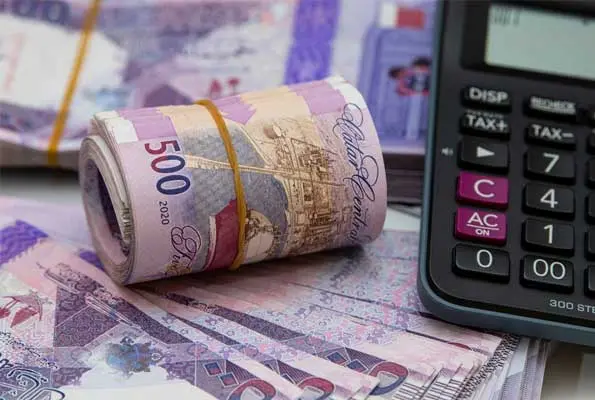The Gulf state of Qatar, known as one of the world’s top LNG exporters, has now posted a budget surplus of 12 billion Qatari riyals (USD 3.29 billion) in the third quarter of 2023, which is better than the previous quarter, cited the nation’s finance ministry data.
The quarterly surplus will now likely be used to boost government reserves and repay debt, the ministry sources told the country’s media.
“Total revenues in the quarter were at 61.8 billion riyals, over 90% of which were from oil, amounting to 56.7 billion riyals. Non-oil revenues totalled 5.1 billion riyals,” the Qatari Finance Ministry mentioned further.
“Spending amounted to 49.8 billion riyals, with spending on major capital expenditures at 17.5 billion riyals, and almost 15 billion riyals for wages and salaries,” it stated further.
The Gulf country recorded a surplus of 10 billion riyals in the 2023 second quarter, despite lower hydrocarbon revenue and a sharp rise in spending, but has already surpassed its 2023 surplus forecast of 29 billion riyals when combined with a much larger surplus in the first quarter, analysts noted.
Qatar’s economy grew 1% in the 2023 second quarter, according to the latest government estimates.
When the country’s Planning and Statistics Authority released its data in November 2023, it, while estimating the quarterly GDP at constant prices, adjusted for inflation, found the figure standing at 170.1 billion Qatari riyals (USD 46.70 billion), compared to the estimate of 168.5 billion riyals for the same period in 2022.
The International Monetary Fund (IMF) recently said that Qatar’s economic growth had normalised in 2023 following the FIFA World Cup-driven boom, backed by a favourable medium-term outlook supported by LNG production expansion and reforms.
The Gulf country’s economy expanded nearly 5% in 2022 and would continue to normalise, with its GDP expected to rise by about 1.75% per annum during the 2023-25 period, the monetary body noted further.
“While continued normalisation is expected in the near term, the country’s economy has a strong medium-term economic outlook, which is supported by a rise in liquefied natural gas production and Qatar’s efforts for economic reforms,” IMF commented, while adding, “The medium-term outlook remains favourable, with the non-hydrocarbon sector growing at 2.75 per cent, driven by domestic demand, including from the construction of the North Field expansion project, and robust tourism, boosted by the global visibility brought by the 2022 Fifa World Cup.”
While the IMF saw the overall medium-term economic growth increasing to about 5% per annum, S&P Global Ratings expected the same ratio to slow to 2% in 2023 after close to 5% expansion in 2022.
The rating agency further predicted Qatar’s growth momentum to strengthen again through 2026, bolstered by investments and hydrocarbon production increases in line with the North Field expansion.
Between 2025 and 2027, the Qatari government plans to increase LNG production capacity by 64%, to 126 million tonnes per year, from the current 77 million tonnes.



